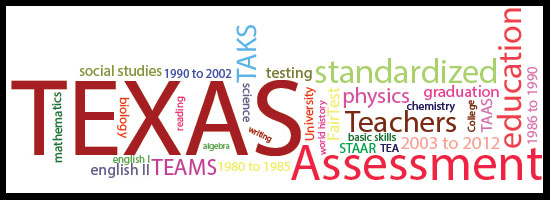Standardized testing flunks out in schools

Meaghan Marquez
The Signal
As of Nov. 30, Texas Association of School Administrators (TASA) reported 875 districts representing more than 4.4 million students have adopted a resolution against high stakes standardized tests in Texas schools called the Resolution Concerning High Stakes, Standardized Testing of Texas Public School Students.
The resolution proposes to reexamine the public school accountability system in Texas and to develop a system that includes multiple assessments and other external evaluation arrangements that will more accurately reflect what students know.
The resolution of high-stakes testing was written by Advancement Project; Asian American Legal Defense and Education Fund; FairTest; Forum for Education and Democracy; Mecklenburg ACTS; Deborah Meier; NAACP Legal Defense and Educational Fund, Inc.; National Education Association; New York Performance Standards Consortium; Tracy Novick; Parents Across America; Parents United for Responsible Education-Chicago; Diane Ravitch; Race to Nowhere; Time Out From Testing; and United Church of Christ Justice and Witness Ministries.
“Tragically, standardized testing is taking up to 45 of the 180 days of class time,” said Peter Wuenschel, executive director of Communities in Schools Bay Area and social work adjunct instructor at UHCL. “This time should be spent allowing teachers to teach their students. In order for students to be ready for college and careers, teachers need to have more time with students teaching them critical thinking and other skills to make them more competitive in the market and in post-secondary education. Unfortunately the standardized testing we have in place in Texas does not adequately measure a student’s competencies.”
The intent of the resolution is to accentuate the over reliance of standardized, high stakes testing as the only assessment of learning that really matters in Texas public schools. The resolution suggests these tests are strangling our public schools and undermining educators. It also recommends classroom learning should be student-centered and result in students learning without the current over-emphasis on what is tested by standardized tests.
“There have been many different tests over the years,” said Thomas Atchley, district secondary instructor specialist for Galena Park ISD. “Each time the test becomes more rigorous. This has happened before when tests have changed – anytime there is change, people don’t like it.”
The Texas Education Agency (TEA) reported a long time line of standardized tests in Texas public schools since the 1980s.
The first state-mandated test was in use from 1980 to 1985 and was called the Texas Assessment of Basic Skills (TABS) test, in which students were tested in grades 3, 5 and 9 in reading, mathematics and writing.
From 1986 to 1990, the Texas Education Assessment of Minimum Skills (TEAMS) test was administered to students in grades 1, 3, 5, 7, 9 and 11 and tested students in reading, mathematics and writing. This test was also the first state test students were required to pass in order to earn a high school diploma.
From 1990 to 2002, the Texas Assessment of Academic Skills (TAAS) test was administered to students in grades 3 – 8 and 10. In addition to testing reading, mathematic, writing skills, science and social studies were tested in eighth grade, Spanish-language tests were available for students in grades 3 – 6, and four end-of-course exams provided an optional method for meeting graduation requirements for tenth grade students.
From 2003 to 2012, the Texas Assessment of Knowledge and Skills (TAKS) test was administered to students in grades 3, 5 and 8; graduation requirements expanded to include English, mathematics, science and social studies.
The State of Texas Assessment of Academic Readiness (STAAR) test replaced the TAKS test. The STAAR test will be administered to students in grades 3 – 8 and testing subjects will remain the same as on the TAKS test; however, in high school, grade-specific assessments will be replaced with 12 end-of-course assessments: algebra I, geometry, algebra II, biology, chemistry, physics, English I, English II, English III, world geography, world history and U.S. history.
“[STAAR] will be more rigorous than TAKS, but overall these tests make teachers do better,” Atchley said. “They help create better curriculum, better lessons and it benefits the students.”
On May 22, 2012, The National Center for Fair and Open Testing (FairTest), an advocacy organization and a co-writer for the high-stakes testing resolution, stated that classroom surveys show most teachers do not find scores from standardized tests scores very useful.
The surveys found most teachers do not think the tests help them understand what to do next in working with a student because they do not indicate how the student learns or thinks; nor do they measure much of what students should learn.
“Standardized testing of students in Texas has gone too far and is actually working against our ability to provide the education experiences needed for students to be most effectively college and career ready,” Wuenschel said.

